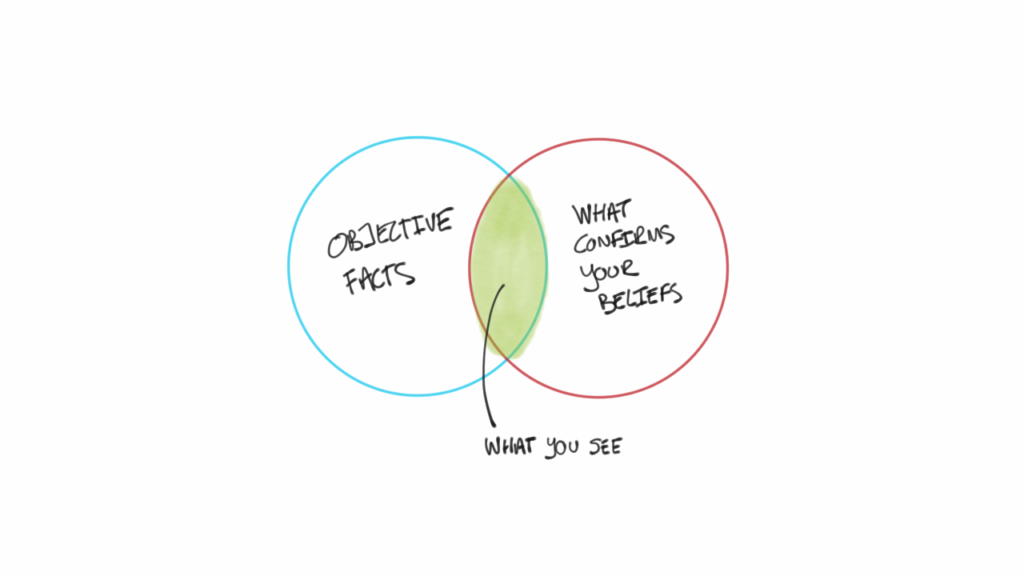The human brain allows humans to store a vast amount of information by creating “mental shortcuts”, which are based on repeated patterns. These repeated patters allow humans to categorize, relate, and group specific information together to create our mental shortcuts. Although this works in human favor to memorize more things, it also can lead to inaccurate or unreasonable conclusions that are biased. A bias is a tendency, inclination, or prejudice toward or against something or someone.

In the world of UX research for data collection, biases can dramatically impact your user research, which could negatively influence the design of your final product. It is important to understand that all humans have biases. Humans naturally develop biases from a young age and it is just part of human nature. When conducting UX research, it is important to know how to anticipate, identify, and overcome all sorts of biases in the research being conducted. Below are eight (8) recommendations on how to steer your users from biased oriented research:
Word Choice
It is very important to not choose words when talking to users that will lead the user in one direction over another because of your word choice. A user is there to give you their own independent input and you should not be looking for the user to give you input that will please you. Although you designed the product, you should be looking for honest feedback and choosing the wrong words when speaking to a user can cause the framing effect. The framing effect is when a user makes a decision or choice based on the way the information was presented to them.
Question to user: “Do you like or dislike the new and improved navigation menu?”
Because you used the word “improved”, the user will automatically think that it is better than the old one and might not give you honest feedback.
Better question to user: “How do you feel about the navigation menu?”
Rephrasing the question in this way will lead the user to answer the question without any conclusions and give you honest feedback.
Independent Thinking
Sometimes it is good to learn from users in an independent form instead of group activities. The reason for this is because if you have a group of five people and ask each person for their input one by one, the last person might be heavily influenced by the first participants who answered the question. Independent thinking will allow each individual person to give uninfluenced opinions.
Avoid Questionable Questions
When conducting surveys, avoid having the selected answers be something you already know. For example, if you ask a question and give the users four answers to select from, those four answers might not always be the best choice for a user. This will lead the survey to have false information because the user had no choice but to select any answer. A better way to perform these types of surveys is to conduct quantitative data gathering. This will allow you to have measurable results by asking users to “rate” their experiences using the product, which will allow you to better gauge how they felt about it.
Limit The Guidance You Give Users
When conducting research, allow the users to test the product without any guidance. Everyone has their own way of navigating through different things so by allowing the users to do this, it will provide you the feedback needed. Another way to gather useful information is to allow the user to walk you through their experience.
Observe Users’ Tone and Body Language
It is important to observe users tone and body language during research. The reason for this is because you want the user to feel comfortable sharing their thoughts with you. If you have a user that might be feeling insecure, uncomfortable, or defensive, they might not share everything with you. If this type of behavior is observed, a good way to handle this situation would be to take a step back in the research and lighten up the room with a conversation about something else to reduce the anxiety or awkwardness.
Monitor Your Actions
Observing your own tone and body language is just as important. Your own tone and body language could lead the user to give you feedback that pleases you rather than honest feedback. For example, if you are sharing a new design you created and are very excited about but the user doesn’t seem to like it, your tone of voice could change and the user will pick this tone up. They might say something that will make you happy even though it is not what they felt. If you are trying to collect authentic genuine feedback, you need the user to feel comfortable sharing their true, unfiltered feelings about the product.
Research Preparation
Don’t fall for conducting research at the last minute. Instead, give yourself ample time to search for the right users. The right users are recruited through a process and screening to attract a bigger pool of users with different backgrounds of qualifications.
Remain Open Minded
Depending on the research schedule, don’t fall victim of only remembering what the first or last user gave you. This is recency bias and primacy bias, where you only remember the first user more than others or last user more than others. To overcome this hurdle, try spacing out scheduling, interview with another colleague, and take very specific careful notes.

